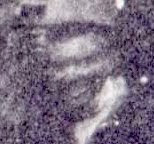
James Daniel Farris (a.k.a. Faires)
Private, Company H, 18th South Carolina Infantry
In August of 1864, as young Fred Bentley signed up for the Union Army, far across the Mason-Dixon line another teenage farm boy was readying himself for war. Seventeen-year-old James D. Farris of York, South Carolina, cast his lot with the Catawba Light Infantry, Company H, 18th South Carolina and would soon be headed for the other side of no man’s land along the Petersburg front. Unlike the 185th New York , the 18th South Carolina was a veteran regiment that since 1862 had been involved in numerous campaigns spanning seven different states. At Petersburg, they served in Johnson’s division of Beauregard’s command. Farris and other new recruits and draftees helped fill the ranks of a regiment diminished by heavy casualties, desertion, and disease. As Farris and his colleagues would soon find out, the 18th’s service was far from over.
The days to come melted into a seemingly endless whir of battles, skirmishes, and periods of prolonged exposure to enemy sharpshooters and artillery. A little over two months in, Farris was shot in the chest and sent to Jackson Hospital in Richmond for treatment. He recovered and rejoined his unit on the front, only to find himself back at Jackson Hospital with a gunshot wound to the face in early March of 1865. Farris returned to his regiment in time for the Battle of Five Forks, where they left the trenches with Major General George E. Pickett’s Division to defend a vital crossroads southwest of Petersburg from the combined forces of Warren’s 5th Corps and Sheridan’s Cavalry Corps. Outnumbered and outflanked, the Confederates fought hard but were ultimately overwhelmed. In the maelstrom of battle, Farris was shot in the head and captured by Union soldiers.
 Confederate prisoners after Five Forks
Confederate prisoners after Five ForksLee’s Army of Northern Virginia was soon forced to abandon Petersburg and Richmond. While Grant’s forces cornered them near Appomattox Court House, a wounded James Farris was on his way to Lincoln General Hospital in Washington, D.C., where he was admitted with a fractured skull. Surgeon J.C. McKee reported removing depressed bone fragments from the wound on April 20. His wound proceeded to heal well.
By the time Farris posed for this portrait in his tattered shell jacket, the war was over. Though he served for only about eight months of a four year war, there is no doubt that the thrice-wounded teen was a veteran by this point. His body, like his clothes, is frayed and torn. But the look in his eyes says everything.
After signing the official Oath of Allegiance in June 1865, Farris was released from Lincoln Hospital. His descendants’ oral traditions hold that he bore an iron plate in his head for the rest of his life as a result of his third war wound. He returned to a life of farming and started a family in Steele Creek, North Carolina. He and his family later moved to Nacogdoches, Texas. By 1910 the lingering effects of his wound had caused him to go blind. James Farris died in 1914 and is buried in Christian Cemetery in Nacogdoches.

No comments:
Post a Comment